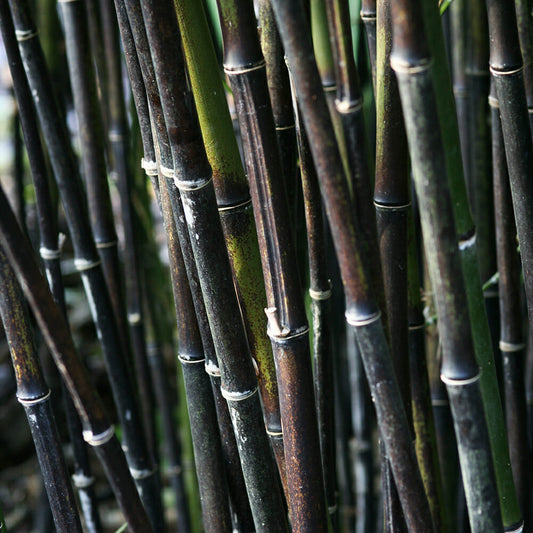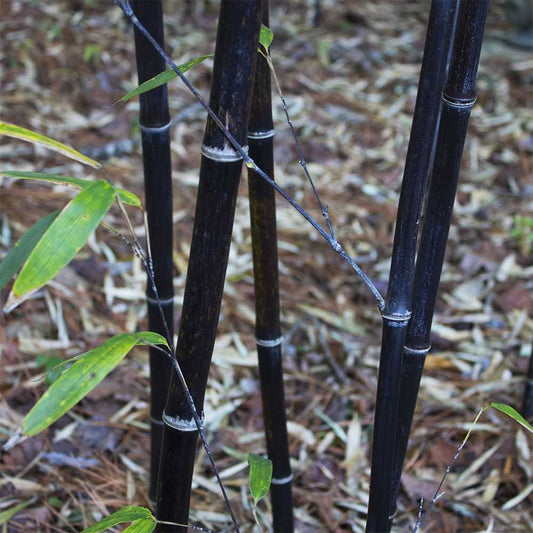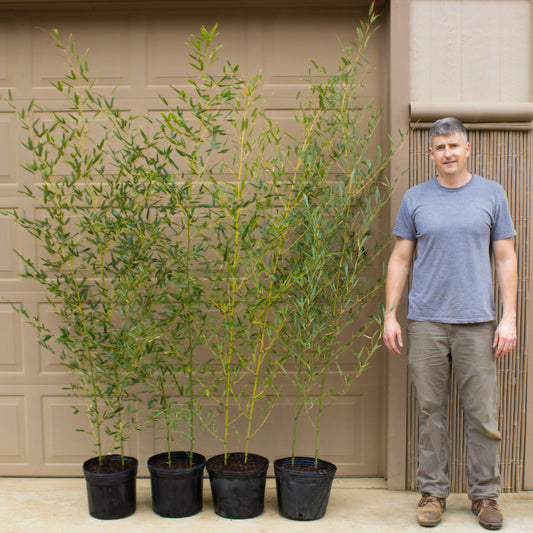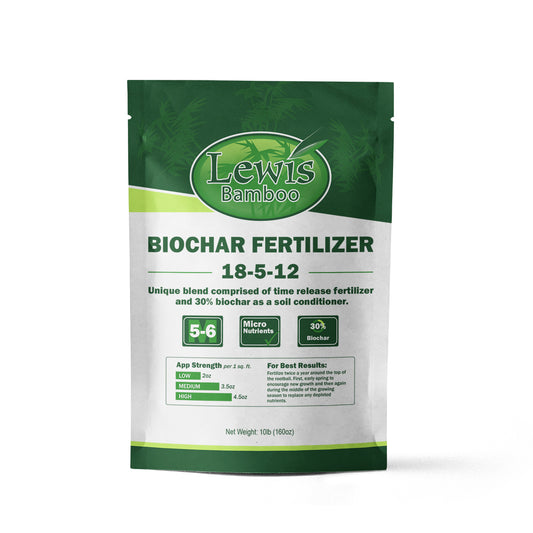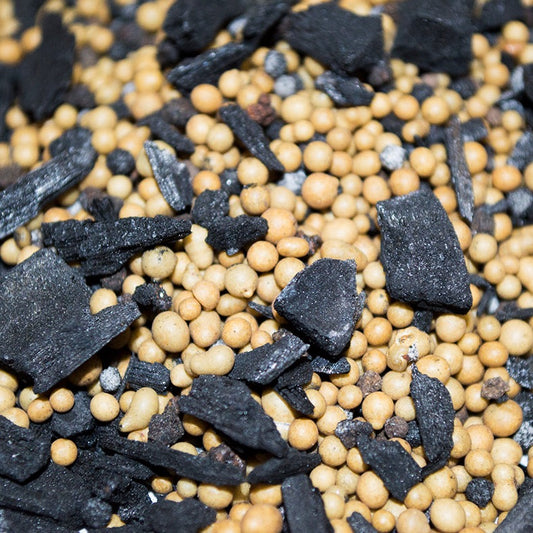Bamboo Culm Problem Guide
Understanding Natural Pigmentation vs. Problematic Signs

Culm (Cane) Spotting – What You're Seeing
Bamboo culms sometimes develop spots or streaks that may appear concerning but are often completely natural or cosmetic. Here's how to identify the common causes:
Natural Conditions
Anthocyanin Pigmentation (Natural)
- Appearance: Purplish, reddish, or black spotting on young culms
- Cause: Natural pigment response, primarily triggered by sun exposure or temperature stress
- Note: This is not a disease and typically appears in newer growth. Does not spread
Aging Culms (Natural)
- Appearance: Faded color, often turning pale yellow, tan, or gray; may show uniform dulling along the entire culm.
- Cause: Natural part of the bamboo life cycle as culms reach maturity (typically 4–10 years, depending on species)
- Impact: This is not harmful — older canes naturally lose vibrancy and should be pruned out as needed to make room for new growth
Non-Threatening Conditions
Fungal Surface Mold or Algae (Non-threatening)
- Appearance: Green, black, or dark brown streaks or spots
- Cause: Common in wet, humid climates
- Impact: Mostly cosmetic, unless it shows rapid spread or tissue decay
Problematic Conditions
Sooty Mold (Problem)
- Appearance: Black, powdery spots on culms or leaves
- Cause: A secondary fungal growth resulting from insect infestations like aphids or scale that leave behind sugary honeydew
- Treatment: Manage insect population to reduce mold recurrence
Wood Borer Damage (Problem)
- Appearance: Tiny dark spots or stains often centered around small round holes; may be accompanied by powdery frass at culm base.
- Cause: Insect larvae (e.g., bamboo borers or beetles) that tunnel into culms, especially in stressed or aging canes.
- Impact: Can weaken structural integrity of the culm; affected areas may feel soft or hollow — remove and destroy if active infestation is found
The most common of the natural appearances is Anthocyanin Pigmentation. This is a normal, non-disease condition caused by anthocyanins — a natural pigment that acts as the plant's protective response to environmental stressors.
Why Do Anthocyanins Appear in Bamboo?
☀️ Sunlight Exposure Bamboo culms exposed to high sunlight may produce anthocyanins as a form of UV protection — like a natural sunscreen.
🌡️ Temperature Stress Cool nights and warm days (especially in spring or fall) encourage pigmentation in developing culms and shoots.
💧 Nutrient Deficiency or Stress Low phosphorus, drought, or transplant shock can increase anthocyanin production.
🧬 Genetics / Species Traits Some species are more likely to show pigmentation, such as:
| Bamboo Species | Pigment Color | Location on Culm | Visibility | Notes |
|---|---|---|---|---|
| Ph. spectabilis | Purplish-red to black spots | Sun-facing sides, across internodes | High | Stands out against yellow culms; often misidentified as fungal |
| Ph. 'Robert Young' | Reddish-burgundy blotches | Around nodes, sun-exposed ridges | Moderate–High | May appear as a soft blush or diffuse spotting |
| Ph. nigra (Black Bamboo) | Deep purple to black blotches | Starts at nodes, spreads with sun | High | Early pigment is part of the maturing process toward full black culms |
| Ph. edulis 'Moso' | Reddish-purple tint or patches | Mostly around nodes on young shoots | Low–Moderate | Common in spring; fades over time; seen more in sun-exposed young growth |

Phyllostachys spectabilis
Golden Bamboo with Green Stripe
- Typical Culm Color: Bright yellow/golden with a prominent green sulcus (groove)
-
Pigmentation Appearance:
- Purplish-red to dark spots or streaks often appear along sun-facing sides, especially on newer culms
- May cause a blush tint or freckled spotting across the yellow surface
- Most noticeable in spring or fall or after a sudden increase in sunlight (e.g., after pruning)
- Common Misinterpretation: The contrast of the dark spots against yellow can make pigmentation appear more alarming than it is — but it's not fungal or disease-related.

Phyllostachys viridis 'Robert Young'
Also golden with green markings, very similar to Spectabilis
- Typical Culm Color: Golden yellow with irregular vertical green streaks
-
Pigmentation Appearance:
- Anthocyanins show up as burgundy to dark reddish-brown spotting, particularly near nodes or sun-exposed ridges
- Can also create a subtle wash or blush effect over parts of the cane
- Usually more diffuse than Spectabilis, depending on sunlight intensity
-
Trigger Factors:
- Cool nights and full sun amplify pigment
- Young shoots often show more than mature culms

Phyllostachys nigra (Black Bamboo)
- Typical Culm Color: Starts green, gradually matures to deep black over 1–3 years
-
Pigmentation Appearance:
- Anthocyanin pigmentation appears as purplish to dark maroon blotches or streaks on young green culms
- These are early-stage color changes and part of the maturing process — not disease
- Pigmentation darkens and spreads over time, contributing to the cane's eventual deep black tone
-
Pigment Location:
- Often starts around nodes, sun-facing areas, or new shoot segments
- Eventually becomes uniform as the culm matures
-
Trigger Factors:
- Sunlight speeds up pigmentation and deepening
- Cooler temperatures may increase blotchiness early on
- Shaded culms may remain green or have only partial pigmentation

Phyllostachys edulis 'Moso'
- Typical Culm Color: Pale green to light yellow-green when young; matures to soft tan or green-gray
-
Pigmentation Appearance:
- Anthocyanins show up as reddish-purple blotches or node discoloration, especially on young shoots
- Commonly seen in early spring growth, particularly in full sun
- May look like light bruising or sun-stressed patches, especially on the lower or mid-section of new culms
-
Pigment Location:
- Most frequently around nodes and internodes
- Rarely covers the whole cane — usually remains patchy or faint
-
Trigger Factors:
- Spring temperature swings (cool nights/warm days)
- Sun exposure on tender new shoots
- Transplant stress or rapid shoot elongation

